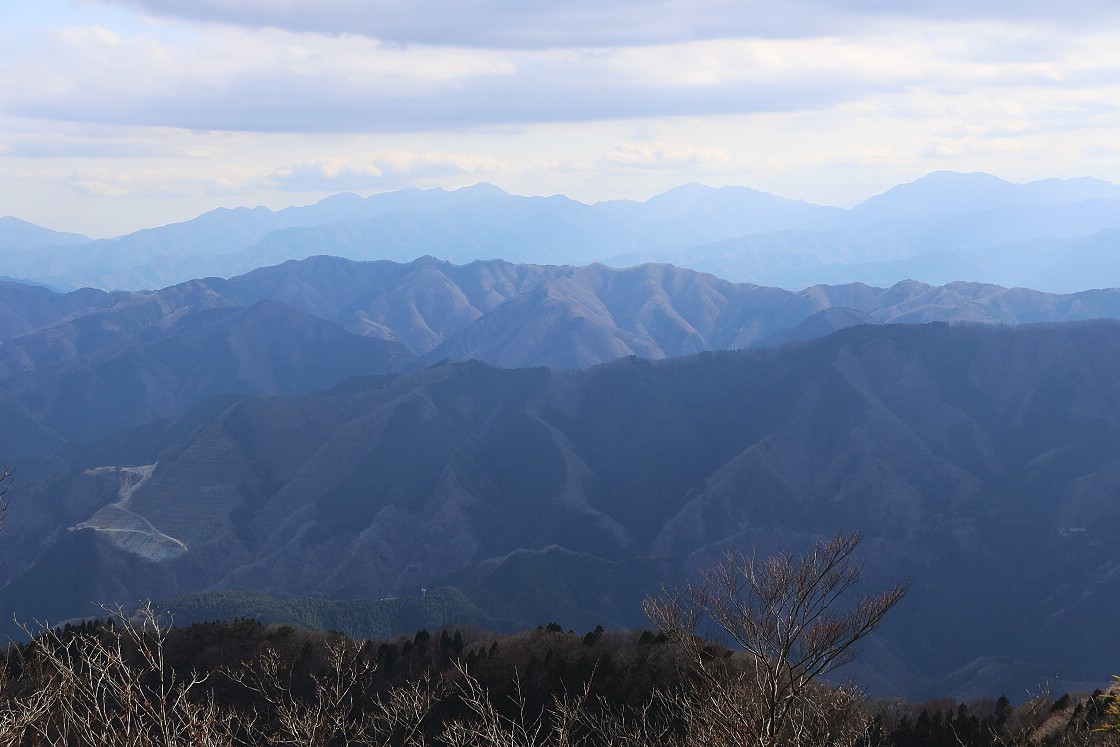The Wolf Shrines of Chichibu Tama
One of the best things about Japan's hugely varied landscape is its impressive number of national parks - with a total of 34 covering almost 6% of the country's landscape, even in the busiest cities you're never too far for a quick escape to one of these natural treasures. For this trip I wanted to demonstrate two easy ways of experiencing the Chichibu Tama Kai, a rugged landscape of mountains, forests and gorges within easy reach of Tokyo - first as an overnight trip including a stay in a traditional ryokan, then alternatively as a quick one-day getaway ideal for a shorter itinerary.

Day 1
I begin my first, overnight journey with an early start at Shinjuku Station, reaching Mitake Station in just over an hour and a half with one change at Ome. From there, a quick ten-minute bus ride brings me to Takimoto, where I board a cablecar up the slope of Mount Mitake. Arriving at the upper station, I am immediately greeted by my first spectacular view, this time back towards Tokyo.

Immediately to the left of the station, a path beginning with a large torii gate winds its way around the mountainside, past a modest visitor center and pilgrim lodging houses, some offering takigyo - the experience of meditating under icy waterfalls.

The Musashi Mitake Shrine sits at the peak of the mountain, separated from the town by a stone staircase lined with tall cedar trees. Said to have been founded around 2000 years ago by the mythical emperor Sujin, the shrine is today best known for its guardian wolf statues, a feature unique to this area. Ancient myths in Japan transmit the story of one Yamato Takeru, a prince of the imperial court and later the 12th Emperor of Japan. While leading a military expedition the prince was led off the path by an evil spirit in the form of a deer, before becoming lost in a thick mist. At that moment, a large white wolf appeared to guide him to safety, and the prince ordered it to stay on the mountain to fight evil spirits. The shrine is one of very few to continue the ancient practice of futomani, a kind of divination using the shoulder bones of deer, in a ceremony held once a year.

Turning back and onto a path at the base of the shrine I make my way down through an avenue of cypress trees towards the valley below. The path forks at the base of a large rocky crag called the Tenguiwa (Tengu Rock), named after the mythical bird-faced creatures and occasional spiritual guides once believed to live on the mountain. Climbing over knotted tree roots with the aid of a fixed metal chain reveals two statues and a little shrine.

To the left, the path leads me down a short but very steep detour over metal steps and twisted tree roots with fixed ropes and chains to the Nanayono waterfall.

Returning to the main path, I continued upstream through an area of moss-covered stones called the Rock Garden and on to the slightly larger Ayahirono falls, where I take a rest before beginning the steep ascent of Mount Odake.

The climb takes me just over an hour and is fairly challenging, taking me up and across the Akuba pass, past a forest shrine and ending with a final scramble to the summit, where I find a breathtaking view of the surrounging peaks and valleys.

Carefully descending a couple of hundred meters from the summit, I continue along a forested ridge for around two hours to Mount Nokogiriyama. The final stretch from here down into the town of Okutama takes another hour and involves a surprising amount of up as well as down, taking me past another little shrine with Tengu statues and offering sudden glimpses of the valley below through partings in the trees.

After a long and winding descent, it's a relief to reach the foot of the mountain and cross the bridge into Okutama, a quiet little town beside the Tama river. My accommodation for the night is the cosy Arasawaya Inn, where I enjoy a long, relaxing hot spring bath (the inn's two baths are shared, but used by one guest at a time) and a wonderful course meal including fresh clams, grilled sweetfish, a mushroom hotpot and wasabi ice cream.


Day 2
After an excellent breakfast at the Arasawaya, I make the two-and-a-half hour train journey from Okutama to Seibu-Chichibu Station, where I change to the No. 5 bus headed for Mitsumine Shrine. While the actual trailhead begins at Owa bus stop, I jump off before that at Mitsumineguchi and continue on foot along the winding Arakawa Gorge, adding some beautiful scenery to my walk at the cost of an extra hour (it's also possible to stay on the bus to the shrine entrance and skip the walk altogether). Arriving at Owa, the trail proper begins at the Toryumon Bridge.

The first section of the path takes just under an hour, leading past stone offering tablets and around the mountain to the Seijo no Taki, a sacred waterfall occasionally used in purification rituals.

After the waterfall the path rises steeply, passing an avenue of cedars then some abandoned huts before entering a thicker cedar forest as I aproach the summit. After a total walking time of just over two hours, I arrive at the the yohaiden or prayer pavilion with a spectacular view across the Chichibu area.

Just like Musashi Mitake, Mitsumine Shrine is associated with the legend of Prince Takeru and known for numerous guardian wolf statues. In contrast with the rather plain style of most Shinto architecure, many of the shrine's structures including the main building are beautifully decorated with detailed and vividly coloured carvings of wild animals, mythical beasts and deities.

To the left of the main building stands a huge 800 year old sacred tree, believed to give a boost of life energy to visitors who touch its bark.

After exploring the shrine, I make my way down to the entrance and take a bus back through winding mountain roads and spectacular scenery to Seibu-Chichibu Station, but visitors may also choose to spend the night at Kounkaku, a ryokan and public hot spring located next to the shrine.

Access
How to get to Mount Mitake from Tokyo
From Shinjuku Station, take the JR Chuo/Ome Line Rapid to Ome Station, and change there to the Ome Line for Mitake Station. The journey takes about 90 minutes, costs 950 yen in total and is covered by the Japan Rail Pass and Tokyo Wide Pass. From directly opposite the station, take the Nishi Tokyo Bus (Ten minutes, 290 yen one-way, departures every half hour) and get off at the final stop. The cablecar departs two to three times per hour and costs 1,130 yen for a round trip or 600 yen one-way. The summit can also be reached from the base station in about forty minutes on foot.
How to get to Mitsumine Shrine from Tokyo
From Ikebukuro Station, take the hourly Seibu Limited Express directly to Seibu-Chichibu Station (about 80 minutes, 1,500 yen), or alternatively, take the Seibu Ikebukuro Line Express to Hanno Station, and change to the Chichibu Line for Seibu-Chichibu Station (100 minutes, 790 yen). Neither journeys are covered by the Japan Rail Pass.
Directly outside the station, look for the No. 5 bus (one to two departures every hour). The same bus route can take you directly to the shrine entrance (75 minutes, 950 yen), to the trailhead at Owa Bus Stop (35 minutes, 570 yen), or Mitsumineguchi Station (25 minutes, 440 yen).

